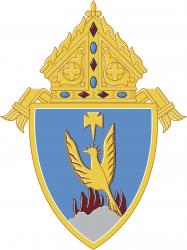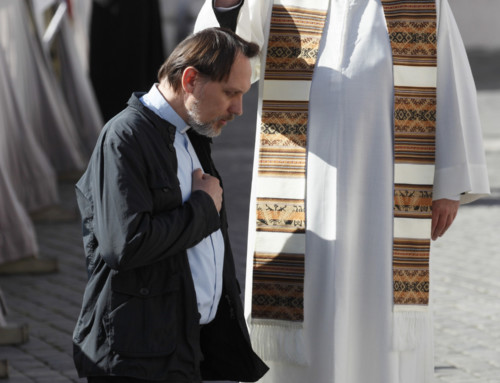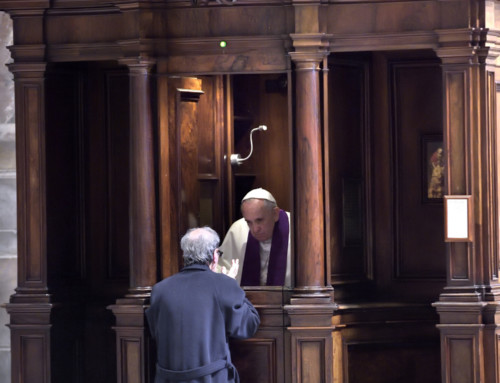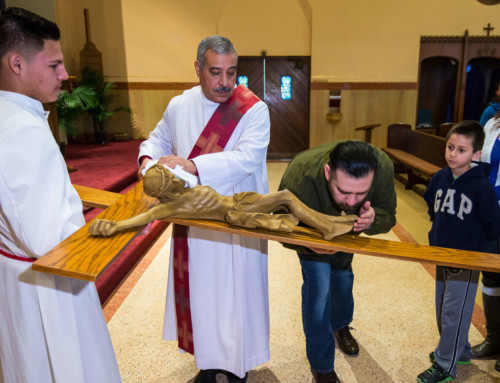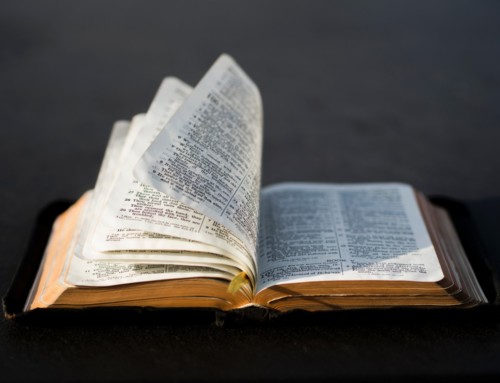The Saints and Eucharistic Devotion
by Norbertine Fr. Alfred McBride
Someone once said to St. Teresa of Avila, “If only I had lived at the time of Jesus . . . If only I had seen Jesus . . . If only I had talked with Jesus.” Teresa responded, “But do we not have in the Eucharist the living, true and real Jesus present before us. Why look for more?” (Rebecca Jordan, “Inspiring Saint Quotes on the Eucharist,” April 30, 2010 [accessed July 14,2010]).
St. Thomas Aquinas tells us, “O precious and wonderful banquet that brings us salvation and contains all sweetness! Could anything be of more instrinsic value? Under the old law it was the flesh of calves and goats that was offered, but here Christ himself, the true God, is set before us as food” (Feast of Corpus Christi. Cited in Liturgy of Hours, Vol III, p. 610).
These saints, among many others, were devoted to the Mass and also to devotions associated with the Eucharist. Devotions to the Eucharist are invitations to prayer and contemplation. On Holy Thursday, after Jesus had transformed bread and wine into his Body and Blood and given the Apostles their First Communion, he proceeded to invite them to prayerful union with him. As they looked at him and the chalice in front of him, they heard him say, “I am the vine, you are the branches. Whoever remains in me and I in him will bear much fruit, because without me you can do nothing” (Jn 15:5). They had received the Sacrament, but they had to live in faith-filled union with Christ so they could serve others. Prayer would help them do this.
Eucharistic devotions such as adoration, holy hours, visits to the Blessed Sacrament, and Eucharistic Congresses are all forms of prayer that increase our interior union with Christ. They help us gain more benefits from the Mass and deepen our desire to serve others. Placing yourself before the tabernacle is a commitment to be a sturdier branch on the vine, a healthier member of Christ’s Body, a heart open to the unseen power of prayer. Michael McDevitt writes,
“The power of prayer is not about your power, but the power you have allowed inside. Christ himself is the unseen power. You are infused with a power far beyond anything you can imagine. St. Paul urges us to live by this faith: ‘We look not to the things that are seen, but to the things that are unseen; for the things that are seen are transient, but the things that are unseen are eternal” (2 Cor 4:18) (Michael McDevitt, The Unseen Power of Prayer [Huntington, IN: Our Sunday Visitor, 2008], 24).
Prayerful participation in the Mass needs the support of eucharistic devotional prayer to keep alive the continuing relationship with Christ. The branches need the vine. Devotional, meditative prayer is one way to do this. Blessed Mother Teresa of Calcutta put it this way: “You are called to do more than say, ‘I love you, Jesus.’ You are called to be your brother’s and sister’s keepers.” The motivation and power to do this comes from prayer, often done before the Blessed Sacrament as Blessed Mother Teresa did every day. She said, “The fruit of silence is prayer. The fruit of prayer is faith. The fruit of faith is love. The fruit of love is service” (McDevitt, 137).
Archbishop Fulton J. Sheen believed that his daily hour of prayer before the Blessed Sacrament was essential for his ministry as a priest. “The Holy Hour became like an oxygen tank to revive the breath of the Holy Spirit” (Treasure in Clay [New York: Doubleday, 1980], 202). Sheen constantly promoted meditative prayer before the Blessed Sacrament. “We become like that which we gaze upon. Looking into a sunset, the face takes on a golden glow. Looking at our Eucharistic Lord for an hour transforms the heart in a mysterious way” (Sheen, 198).
The Eucharistic procession that accompanies the feast of Corpus Christi is a devotion that stirs the hearts of many to feel Christ’s loving presence more vividly. The pageantry that brings the Eucharist into city streets communicates the warmth and intimacy of this mystery. In 1264, Pope Urban IV extended the feast of Corpus Christi from Liege, Belgium, to the whole Church and commissioned Thomas Aquinas to compose a liturgy for it. The pope hoped the feast would improve the faith of the people in Christ’s real presence in the Eucharist and counteract the heresy that denied it. The hymns and prayers and sermons Thomas provided were strong catechetical tools that turned the tide in favor of a comprehensive faith in the Eucharist.
All these testimonies emphasize the Church’s faith in the doctrine of the real presence of Christ’s Body, Blood, soul, and divinity in the Eucharist. It was Jesus himself who defended this gift and mystery when he foretold it in his Bread of Life Discourse: “I am the living bread that came down from heaven. Whoever eats my flesh and drinks my blood remains in me and I in him” (Jn 6:51, 56). His listeners protested, “This saying is hard; who can accept it?” (Jn 6:60). Jesus did not back off. He challenged the apostles to believe him. Peter spoke for them. “To whom shall we go? You have the words of eternal life” (Jn 6:68). In the holy meal of the Last Supper, Jesus fulfilled his promise by changing bread and wine into his Body and Blood. In the Mass and Eucharistic devotions, we have this treasure of grace and prayer that is the summit and source of the Christian life.
In the sixteenth century, the denial of the Real Presence occurred again, along with a repudiation of the Mass as making present the redemptive sacrifice of Jesus. The Church’s response through the Council of Trent strongly reaffirmed these Eucharistic truths and sponsored the revival of Eucharistic devotions initiated in the Middle Ages.
Perhaps the greatest eucharistic artwork from this period is Peter Paul Rubens’s oil painting entitled The Defenders of the Eucharist, created in 1625. Rubens reached back to the golden age of the Church Fathers as well as to outstanding saints of the Middle Ages and assembled seven of them in one scene, united in the one faith of the Church witnessing their unity through the centuries of faith in the eucharistic presence of Christ.
Today that painting is on display in the Ringling Museum of Art in Sarasota, Florida. Beginning on the right side of the canvass, Rubens pictures St. Jerome, dressed as a cardinal receiving Communion. Next to him stands St. Norbert, clothed in his white habit and carrying the Eucharist beneath his robes. St. Thomas Aquinas stands in the center holding a book and extending his other hand to heaven, a gesture proclaiming his defense of the Eucharist. Beside him is St. Clare of Assisi, holding a monstrance that displays the sacred eucharistic host. To her left is St. Gregory the Great, the pope who wrote so many works contained in the Mass. Then comes St. Ambrose, who wrote about the Real Presence of Christ in the Eucharist. Rubens finishes his gathering of defenders of the Eucharist with St. Augustine, who included his reflections on this sacrament in his famous treatise on the Holy Trinity.
Rubens produced this painting during the Church’s Counter-Reformation efforts to defend and reclaim the authentic teachings about the Eucharist and the devotions that assisted believers to deepen their commitment to this mystery of faith (see the John and Mable Ringling Museum of Art, “Peter Paul Rubens and the Baroque,” Galleries 1-2 [accessed July 14, 2010]).
The seven saints represented in this painting summarize our belief in the Eucharist. It is a sacrifice, the sacrifice of Jesus made present in a sacramental way. It is a sacrament of the abiding presence of Christ in the transformed bread and wine become his Body and Blood. It is a sacramental meal begun on Holy Thursday and available to us in Holy Communion.
This sacrament is available to members of the Catholic Church who are in the state of grace. It is a transforming sacrament. The term “transubstantiation” means that the substance of bread and wine is changed into the substance of Christ’s Body and Blood. In receiving Communion, we too undergo a gradual transformation into Christ and are called to spread his love given to us throughout the world.
I conclude with a few practices for parents and catechists to foster eucharistic devotions:
- Regularly attend weekend Mass with the family. Come for prayer before and after Mass.
- Adore the raised Body and Blood of Christ at Mass with the silent phrase, “My Lord and my God.”
- Participate in eucharistic adoration where possible.
- Genuflect with reverence before the Blessed Sacrament.
- Make visits to the Blessed Sacrament altar individually and with whole family.
- Engage family in regular Scripture study and catechesis on the Eucharist.
- Read lives of eucharistic saints such as St. Katharine Drexel and St. John Neumann.
We taste in you our living bread and Long to feast upon you still. We drink of you our fountainhead, our thirsting souls to quench and fill. (O Jesus, Joy of Loving Hearts, Worship: A Hymnal and Service Book for Roman Catholics (Chicago: GIA Publications, Inc., 1986), 605, second stanza)
Copyright © 2011, United States Conference of Catholic Bishops, Washington, D.C. Used with permission. All rights reserved.
Scripture texts used in this work are taken from the New American Bible, copyright © 1991, 1986, and 1970 by the Confraternity of Christian Doctrine, Washington, DC 20017 and are used by permission of the copyright owner. All rights reserved.


